27-Hydroxycholesterol contributes to cognitive deficits in APP/PS1 transgenic mice through microbiota dysbiosis and intestinal barrier dysfunction
- PMID: 32593306
- PMCID: PMC7321549
- DOI: 10.1186/s12974-020-01873-7
27-Hydroxycholesterol contributes to cognitive deficits in APP/PS1 transgenic mice through microbiota dysbiosis and intestinal barrier dysfunction
Abstract
Background: Research on the brain-gut-microbiota axis has led to accumulating interest in gut microbiota dysbiosis and intestinal barrier dysfunction in Alzheimer's disease (AD). Our previous studies have demonstrated neurotoxic effects of 27-hydroxycholesterol (27-OHC) in in vitro and in vivo models. Here, alterations in the gut microbiota and intestinal barrier functions were investigated as the possible causes of cognitive deficits induced by 27-OHC treatment.
Methods: Male APP/PS1 transgenic and C57BL/6J mice were treated for 3 weeks with 27-OHC (5.5 mg/kg/day, subcutaneous injection) and either a 27-OHC synthetase inhibitor (anastrozole, ANS) or saline. The Morris water maze and passive avoidance test were used to assess cognitive impairment. Injuries of the intestine were evaluated by histopathological examination. Intestinal barrier function was assessed by plasma diamine oxidase (DAO) activity and D-lactate. Systemic and intestinal inflammation were evaluated by IL-1β, TNF-α, IL-10, and IL-17 concentrations as determined by ELISA. The fecal microbiome and short-chain fatty acids (SCFAs) were analyzed using 16S rDNA sequencing and ultra-performance liquid chromatography-mass spectrometry (UPLC-MS). Tight junction proteins were evaluated in the ileum and colon by qRT-PCR and Western blots. Tight junction ultrastructure was examined by transmission electron microscopy.
Results: Treatment with 27-OHC resulted in severe pathologies in the ileum and colon. There was impaired intestinal barrier integrity as indicated by dilated tight junctions and downregulation of tight junction proteins, including occludin, claudin 1, claudin 5, and ZO-1, and signs of inflammation (increased IL-1β, TNF-α, and IL-17). Fecal 16S rDNA sequencing and taxonomic analysis further revealed a decreased abundance of Roseburia and reduced fecal levels of several SCFAs in 27-OHC-treated mice. Meanwhile, co-treatment with ANS reduced intestinal inflammation and partially preserved intestinal barrier integrity in the presence of 27-OHC.
Conclusions: The current study demonstrates for the first time that 27-OHC treatment aggravates AD-associated pathophysiological alterations, specifically gut microbiota dysbiosis and intestinal barrier dysfunction, which suggests that the gut microbiome and intestinal barrier function warrant further investigation as potential targets to mitigate the neurotoxic impact of 27-OHC on cognitive function and the development of AD.
Keywords: 27-Hydroxycholesterol; Alzheimer’s disease; Cognitive deficits; Gut microbiota; Inflammation; Intestinal barrier dysfunction.
Conflict of interest statement
The authors declare that they have no competing interests.
Figures

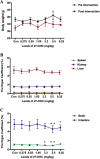

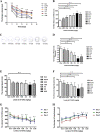
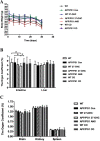
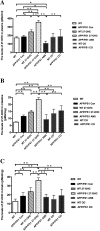


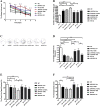

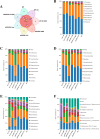
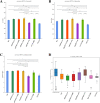







Similar articles
-
The administration of Escherichia coli Nissle 1917 ameliorates irinotecan-induced intestinal barrier dysfunction and gut microbial dysbiosis in mice.Life Sci. 2019 Aug 15;231:116529. doi: 10.1016/j.lfs.2019.06.004. Epub 2019 Jun 4. Life Sci. 2019. PMID: 31173781
-
A Polysaccharide Isolated from Dictyophora indusiata Promotes Recovery from Antibiotic-Driven Intestinal Dysbiosis and Improves Gut Epithelial Barrier Function in a Mouse Model.Nutrients. 2018 Jul 31;10(8):1003. doi: 10.3390/nu10081003. Nutrients. 2018. PMID: 30065236 Free PMC article.
-
Gut microbiota disorder caused by diterpenoids extracted from Euphorbia pekinensis aggravates intestinal mucosal damage.Pharmacol Res Perspect. 2021 Oct;9(5):e00765. doi: 10.1002/prp2.765. Pharmacol Res Perspect. 2021. PMID: 34523246 Free PMC article.
-
Chronic stress-induced gut dysfunction exacerbates Parkinson's disease phenotype and pathology in a rotenone-induced mouse model of Parkinson's disease.Neurobiol Dis. 2020 Feb;135:104352. doi: 10.1016/j.nbd.2018.12.012. Epub 2018 Dec 21. Neurobiol Dis. 2020. PMID: 30579705 Review.
-
The Impact of Gut Microbiota on Radiation-Induced Enteritis.Front Cell Infect Microbiol. 2021 Jul 29;11:586392. doi: 10.3389/fcimb.2021.586392. eCollection 2021. Front Cell Infect Microbiol. 2021. PMID: 34395308 Free PMC article. Review.
Cited by
-
Gut microbiota metabolites: potential therapeutic targets for Alzheimer's disease?Front Pharmacol. 2024 Sep 17;15:1459655. doi: 10.3389/fphar.2024.1459655. eCollection 2024. Front Pharmacol. 2024. PMID: 39355779 Free PMC article. Review.
-
Advances in the study of IL-17 in neurological diseases and mental disorders.Front Neurol. 2023 Nov 16;14:1284304. doi: 10.3389/fneur.2023.1284304. eCollection 2023. Front Neurol. 2023. PMID: 38046578 Free PMC article. Review.
-
Benign regulation of the gut microbiota: The possible mechanism through which the beneficial effects of manual acupuncture on cognitive ability and intestinal mucosal barrier function occur in APP/PS1 mice.Front Neurosci. 2022 Aug 3;16:960026. doi: 10.3389/fnins.2022.960026. eCollection 2022. Front Neurosci. 2022. PMID: 35992924 Free PMC article.
-
Dietary Garlic Powder Alleviates Lipopolysaccharide-Induced Inflammatory Response and Oxidative Stress through Regulating the Immunity and Intestinal Barrier Function in Broilers.Animals (Basel). 2022 Sep 2;12(17):2281. doi: 10.3390/ani12172281. Animals (Basel). 2022. PMID: 36078001 Free PMC article.
-
Related Effects of Methamphetamine on the Intestinal Barrier via Cytokines, and Potential Mechanisms by Which Methamphetamine May Occur on the Brain-Gut Axis.Front Med (Lausanne). 2022 May 10;9:783121. doi: 10.3389/fmed.2022.783121. eCollection 2022. Front Med (Lausanne). 2022. PMID: 35620725 Free PMC article. Review.
References
-
- Pena-Bautista C, Baquero M, Ferrer I, Hervas D, Vento M, Garcia-Blanco A, Chafer-Pericas C. Neuropsychological assessment and cortisol levels in biofluids from early Alzheimer's disease patients. Exp Gerontol. 2019;123:10–16. - PubMed
-
- Liu P, Wu L, Peng G, Han Y, Tang R, Ge J, Zhang L, Jia L, Yue S, Zhou K, et al. Altered microbiomes distinguish Alzheimer's disease from amnestic mild cognitive impairment and health in a Chinese cohort. Brain Behav Immun. 2019;80:633–643. - PubMed
-
- Bauerl C, Collado MC, Diaz CA, Vina J, Perez MG. Shifts in gut microbiota composition in an APP/PSS1 transgenic mouse model of Alzheimer's disease during lifespan. Lett Appl Microbiol. 2018;66:464–471. - PubMed
MeSH terms
Substances
Grants and funding
LinkOut - more resources
Full Text Sources

